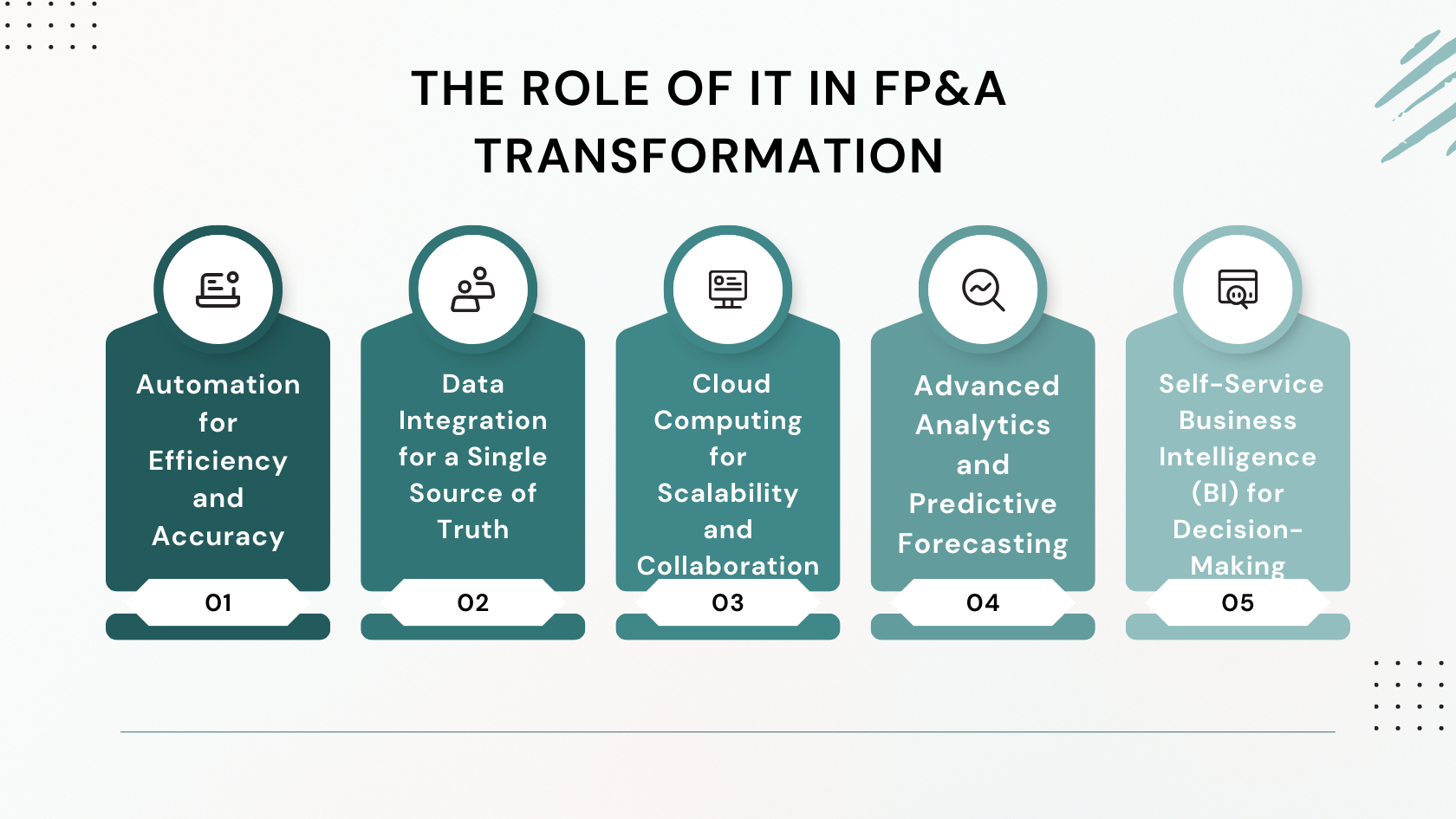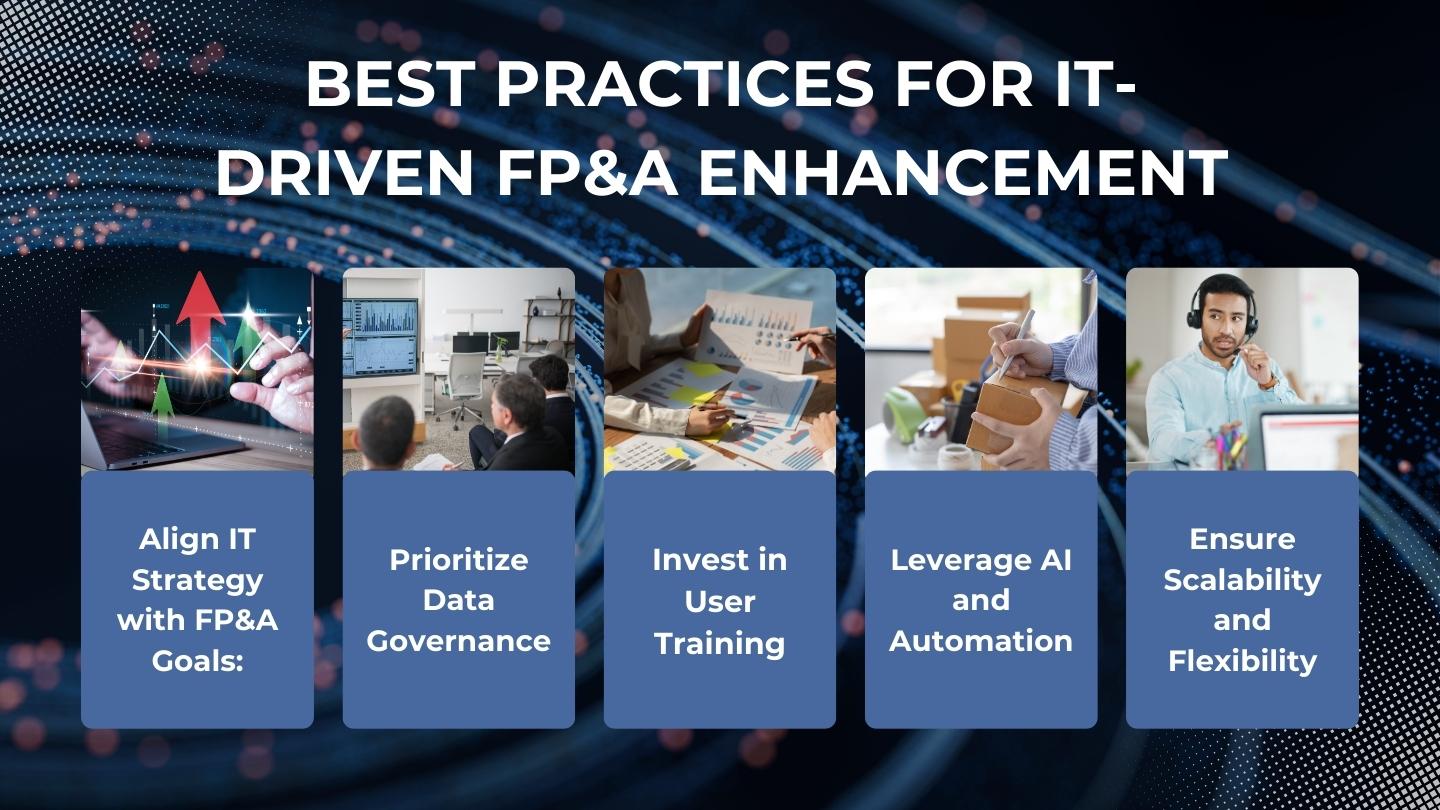FP&A and the Effective Use of IT Tools: A Strategic Advantage
Financial Planning & Analysis (FP&A) teams play a critical role in ensuring an organization’s financial health by forecasting, budgeting, and supporting strategic decision-making. However, traditional FP&A processes are often hindered by manual data handling, disjointed systems, and inefficient workflows. The integration of IT tools can transform FP&A operations, enabling accuracy, efficiency, and strategic agility. This article explores how IT solutions can enhance FP&A functions and the key considerations for effective implementation.

The Role of IT in FP&A Transformation
1. Automation for Efficiency and Accuracy
One of the biggest challenges in FP&A is handling vast amounts of financial data. IT tools such as Enterprise Performance Management (EPM) software (e.g., Anaplan, IBM TM1, Oracle Hyperion) automate data consolidation, reducing manual errors and increasing efficiency. Automation also enables FP&A teams to focus on high-value tasks like scenario planning and strategic advisory rather than data entry.
2. Data Integration for a Single Source of Truth
Many FP&A teams struggle with fragmented data across different systems (ERP, CRM, HR, and supply chain). Cloud-based data platforms and ETL (Extract, Transform, Load) tools help unify data, providing a single source of truth. Solutions like Snowflake, Microsoft Power BI, and Tableau ensure that real-time, accurate data is available for decision-making.
3. Advanced Analytics and Predictive Forecasting
With AI-driven analytics and machine learning models, FP&A teams can enhance their forecasting accuracy. Predictive analytics tools can analyze historical data and market trends to generate sophisticated forecasts, helping organizations make proactive financial decisions. Platforms like Palantir, Alteryx, and SAP Analytics Cloud are leading solutions in this domain.
4. Cloud Computing for Scalability and Collaboration
The rise of Software-as-a-Service (SaaS) solutions has enabled FP&A teams to collaborate effectively across departments. Cloud-based planning tools eliminate silos, allowing real-time data access and seamless collaboration. Google Cloud, Microsoft Azure, and AWS provide robust infrastructure for FP&A solutions.
5. Self-Service Business Intelligence (BI) for Decision-Making
CFOs and finance leaders require instant access to key financial metrics. Self-service BI tools empower FP&A professionals to create ad-hoc reports without relying on IT departments. Tools like Power BI, Qlik Sense, and Tableau democratize data access, enabling quick decision-making.
Best Practices for IT-Driven FP&A Enhancement
- Align IT Strategy with FP&A Goals: Ensure IT investments directly support financial planning objectives.
- Prioritize Data Governance: Establish clear data policies to maintain accuracy, security, and compliance.
- Invest in User Training: A well-implemented tool is only as effective as the team using it. Continuous upskilling is crucial.
- Leverage AI and Automation: Use AI-driven analytics to drive data-driven decision-making and automate repetitive tasks.
- Ensure Scalability and Flexibility: Choose cloud-based solutions that can adapt to changing business needs.

Conclusion
The effective use of IT tools in FP&A can drive operational excellence, improve decision-making, and enhance strategic planning. By integrating automation, data analytics, cloud computing, and business intelligence, organizations can empower FP&A teams to deliver greater financial insights and agility. As digital transformation accelerates, CFOs and FP&A leaders must prioritize IT investments that align with business goals and long-term financial strategies.
